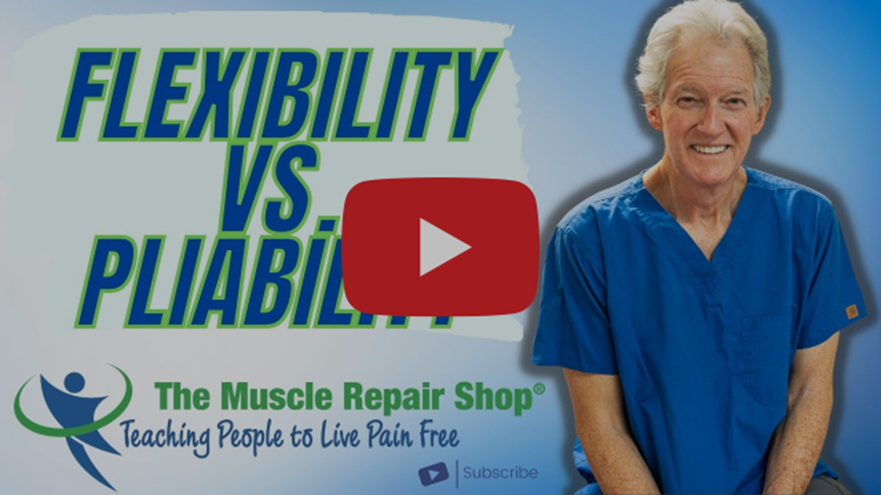The muscles of the human body are an interesting system in that there is a lot of chatter about them. Unfortunately, some chatter has led to people making mistakes when stretching.
How much do we really understand muscles? I remember in my anatomy classes, at the high school level and university level, far less time was spent on the muscles than say, the bones or organs. The truth is, the deterioration of our muscle mass is the beginning of our aging process. Most longevity experts today believe that the loss of muscle mass has a detrimental effect on the rest of our body.
In most anatomy classes that I have taken, the class focused more on the names of the muscles, where they are attached and inserted, and what bones or limbs they move. Beyond that, it was more about fitness, mostly strength training with virtually nothing about stretching. Once I got into training people at the gym, stretching became an afterthought, or thought of as a warmup or cool down. The actual stretching itself was considered an activity of futility, especially as we aged.
Avoid These 5 Big Mistakes When Stretching
Today I want to talk about the five biggest mistakes people make when stretching and how my Stretch n’ Release Technique can improve it. So, let’s begin.
#1- Holding the Stretch Way Too Long
Most trainers, therapists, and physical therapists have you hold a stretch for 15, 20, or up to 60 seconds. Their assumption here is that the longer the stretch is held, the more likely the muscle will give in and let go. But, the issue here is we are working against the brain. If you are tight, which most people are, stretching can be painful. As the pain level increases, or the period of time you feel the pain increases, the brain will contract the opposing muscle in an effort to stop the pain. This means you are actually doing more strength training than stretching.
#2- Pulling Way Too Hard
Again most people teach us to pull the muscle as hard as we can for as long as we can. When you do this, stretching can be exhausting, which is not the way to stretch. Stretching is more about emotional releasing versus forcing the muscle to let go. Here again, the idea is the muscle is refusing to let go. This would require the muscle to have its own brain and the ability to decide if it wants to release or not. You only have one brain, and it controls all the muscles in your body. Pulling too hard, especially when there is pain, forces the brain to contract the opposing muscle to stop the pain. For example, if you are stretching your hamstrings, back of your thigh, the quad muscles, the front of your thighs, will contract to stop you from stretching your hamstrings if the pain is too great.
#3 Muscle Memory
Too many times we hear professionals speak of “muscle memory” in the context that it is the muscle that remembers how to move. Think of the muscles as the emotional fingers of the brain. When we do a movement without much conscious thought, the muscle did not remember, the brain had laid down a neural pathway and remembered which muscles to recruit for the movement we need to do. Think of stroke patients. Though the damage is to the brain, they lose the use of an arm or leg, or both. The stroke damage did not affect the actual limb, but, rather, the brain areas that control the limb. If a muscle had a memory, the stroke should not affect the muscles, yet it does.
#4- I Feel Weak, Maybe I need More Strength
In some cases, this can be true. However, in many cases, it is more about stiffness than weakness. When your muscles are tight, it places an enormous amount of pressure on the joints and back. This pressure causes you to burn more energy with every movement. When we were younger, our bodies were not stiff and movement was much easier. As we get older and stiffer, it takes twice the energy for the same movement. Too many times, we are told we need to build more strength when building more strength can make us feel worse.
#5- Muscle Cannot Affect Joints and Discs
I was told once by a highly trained professional therapist that muscles could not affect a joint. I was floored because our muscles cross over every joint. When they become tight, the muscles pull in both directions. The bones must come closer together. In regards to joints, it can squeeze out the synovial fluid, a WD-40 like substance that the body injects into the joint for lubrication and cushioning. Once this happens, the cartilage can be damaged and can lead to a joint replacement.
The muscles, can, and will, affect the discs in the back. Think about a quadriplegic. They have the same bones we have. The problem is, their muscles no longer work. We need our muscles to apply pressure to the bones so we can sit up, stand up, and move. Without that pressure, we would fall down like a limp dishrag. The back consists of twenty-six vertebrae with soft discs in between that prevent us from clanking when we move, and they protect the bones as well.
Muscles run up and down the spine on all sides from our head to our pelvis. Depending on which muscles become tighter, they can shift a bone in a direction that could cause a disc to bulge or apply enough compression on the spine that could crush the discs and lead to herniation. For instance, our legs control the placement of the pelvis. The leg muscles can shift the pelvis forward, backward, or side to side. Each of those movements can affect the discs of the low back. If the chest and front of the neck are tight, they can affect the upper back.
You Can Stop the Misinformation Train
We have all heard someone repeat this incorrect information over and over. Many people follow this advice and many times it ends badly for them. Learning how the brain affects the muscles allows us to see how thoughts, as well as actions, can lead to many injuries that include damage to the bones.
I have often said to my clients, “think of an MRI or x-ray as a still shot of a moment in time.” We can see the damage in the picture, but we cannot see how the damage was done. In other words, we see the dented fender, we just don’t know how it became dented. I have added a couple of stretches that hopefully help explain more about this topic and of course, one of a stretch.
Tips to Improve your Stretching
All you need is a yoga strap and a tennis ball for the tennis ball massage. Give yourself about 15 minutes twice a day and you should see better results within 2 weeks. This, though, is a lifetime event. Think of your pet. they stretch every day and several times a day. Stretch when they stretch. Follow the videos below and free your knees. In my opinion, the calf stretch is the most important stretch a human can do. It will solve many issues of the body.

Stretching is more about feeling the muscles letting go than forcing them to stretch. If you are forcing the muscle, you could be doing strength training, not stretching. Make sure you are feeling the intended muscle stretching. If not, the form could be wrong. Holding for 5 seconds allows the brain to release the muscle before it senses any danger. Repeating the stretches 10 times allows the brain to learn it is safe for the muscle to move that way.
Don’t forget the Tennis Ball Massage!
Softening your hips and back is easy when you use the tennis ball. Just lean against the wall and apply enough pressure to feel the painful area. The temptation is to press harder but resist it. Instead, breathe out and allow the muscle to soften under the ball. Then move to another spot and repeat. Continue doing this until most of the painful spots are gone. Check out previous newsletters to see the video.
Subscribe to my YouTube Channel for access to free videos as I post them.

Want to Talk with Me Directly? Start Here
We’re happy to offer you a complimentary 30-min virtual consultation so you can experience this for yourself. Schedule your introduction to Stretch n Release now.
About The Muscle Repair Shop
Drawing upon his personal experience as a former competitive athlete turned wheelchair, obese, and chronic pain sufferer, Muscle Repair Shop Founder Butch Phelps decided to take his health into his own hands when at the age of 36 he was told he might not make it to his 40th birthday. Applying balanced nutrition advice from his doctor along with a sound exercise program, he went from 315 lbs. to 180 lbs. Motivated by his experience, he then acquired degrees in advanced therapeutic massage and aging sciences to help people eliminate chronic pain. This included applying his expertise in how people age, including the effects of dementia, anatomy, psychology, and the day-to-day struggles living as an older person to his practice and development of The Muscle Repair Shop’s one-of-a-kind Stretch n’ Release Technique.
Available through in-office and virtual coaching treatment sessions, this unique combination of stretching and breath work teaches the brain to release the emotional side of muscle tension and pain allows clients to find lasting relief and healing from stiffness, aches, injuries, and chronic pain. The at-home exercises come with customized instructional videos and virtual or in-office support, allowing clients to enjoy and experience life and sports as they did before limitations slowed or curtailed activities.


